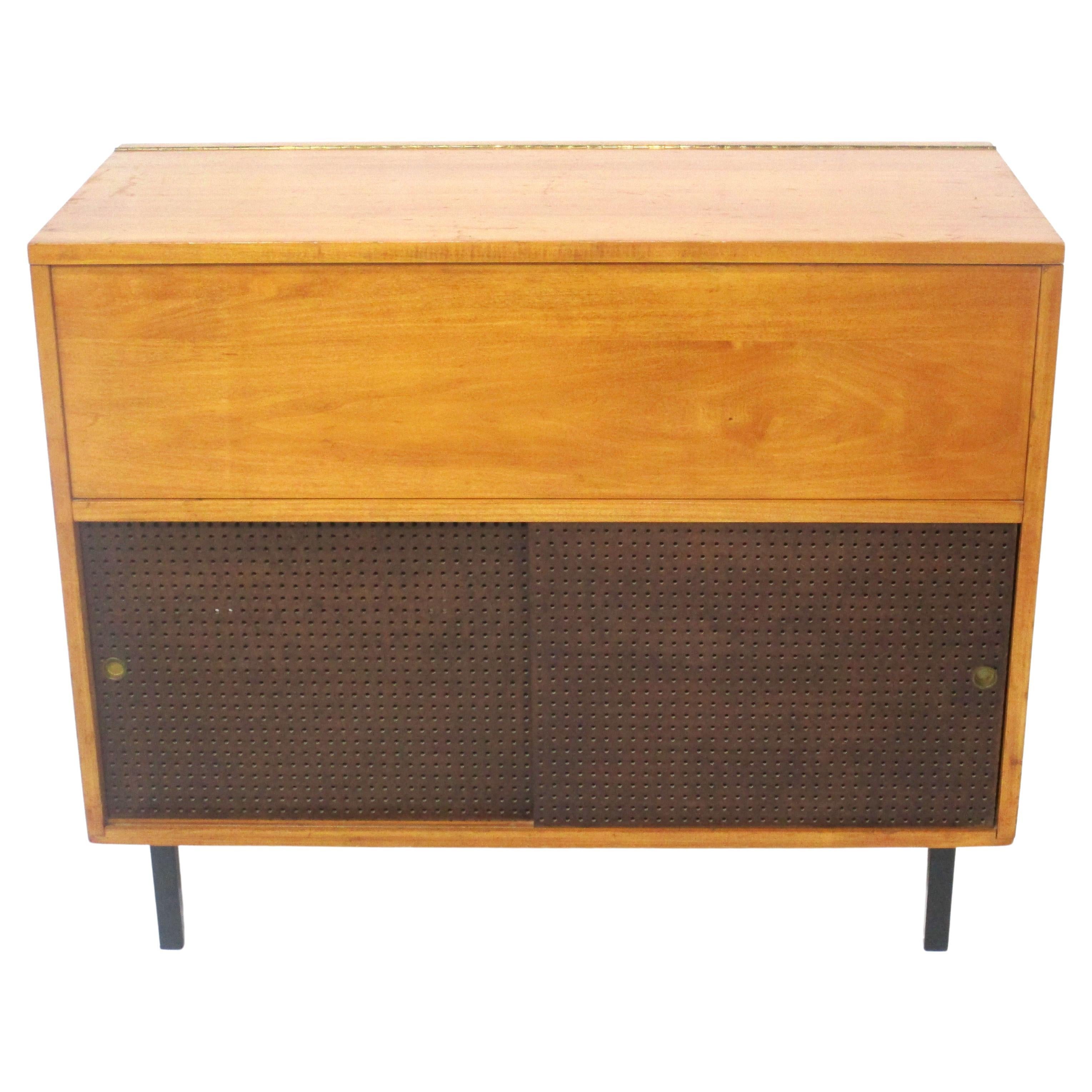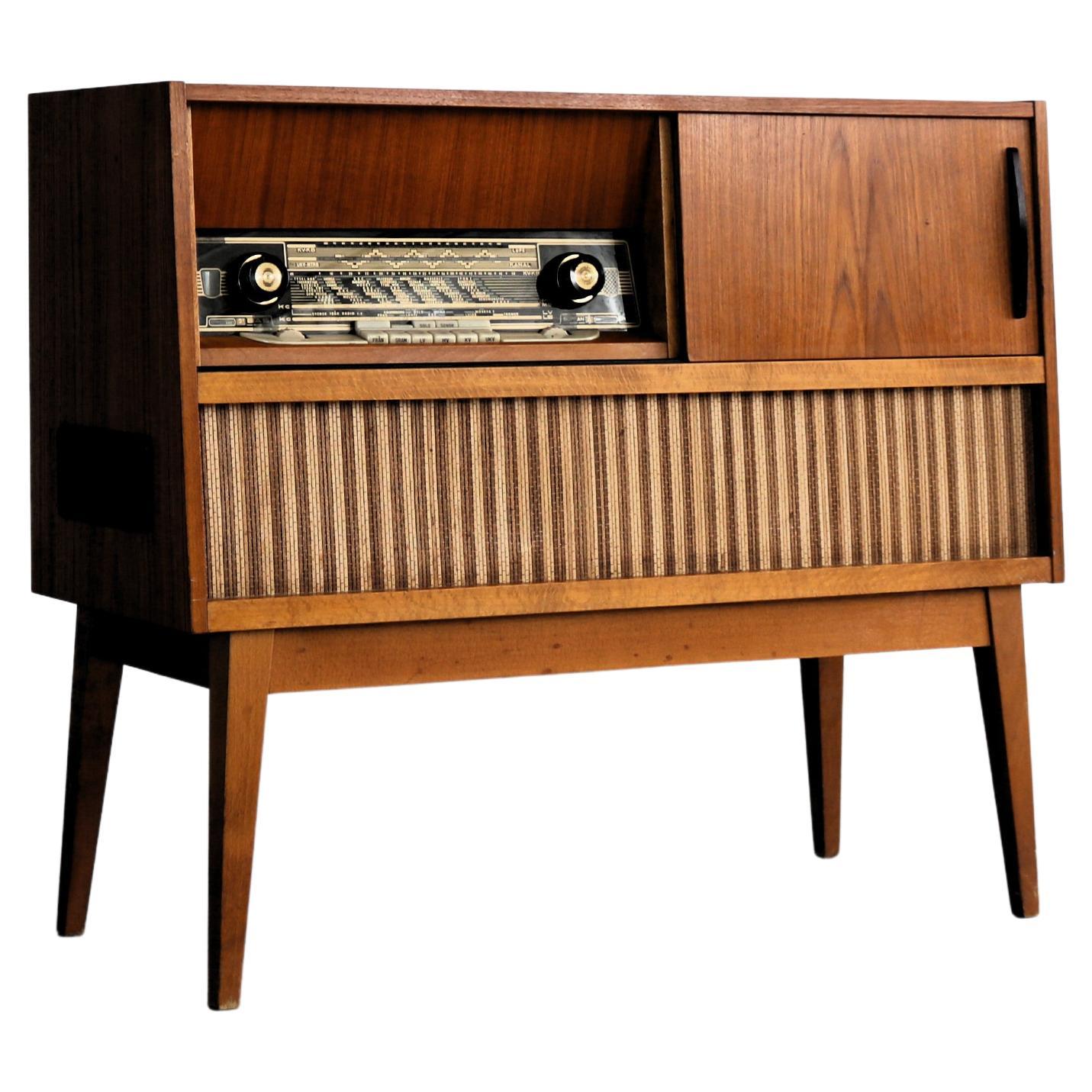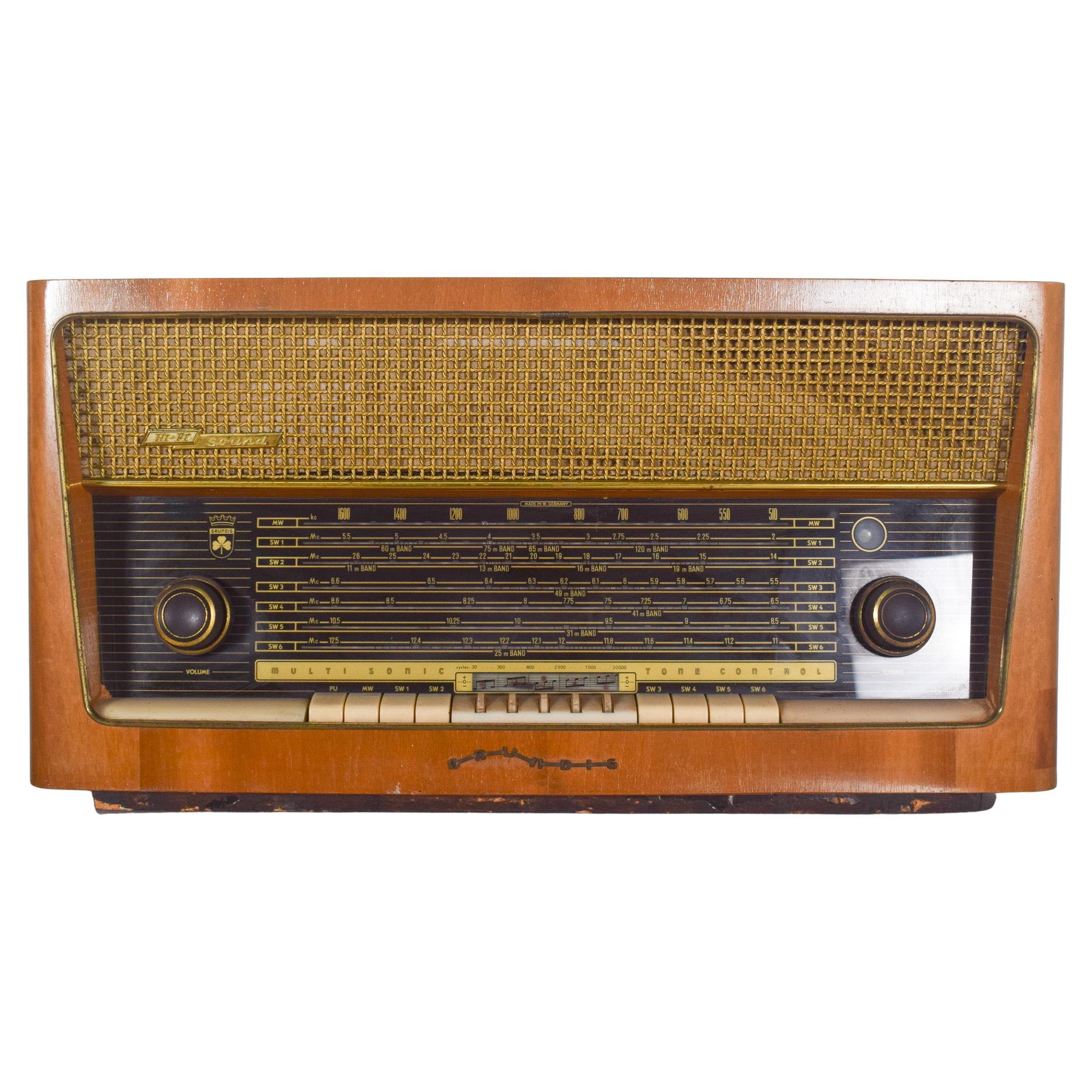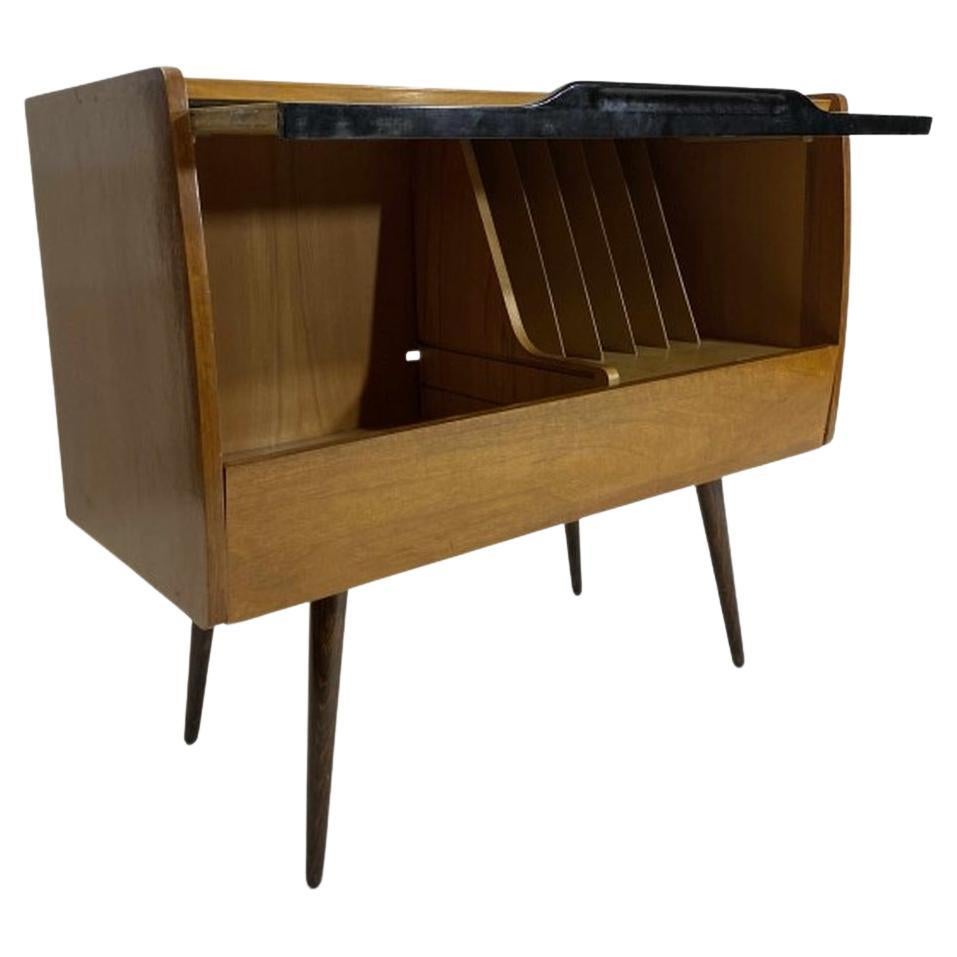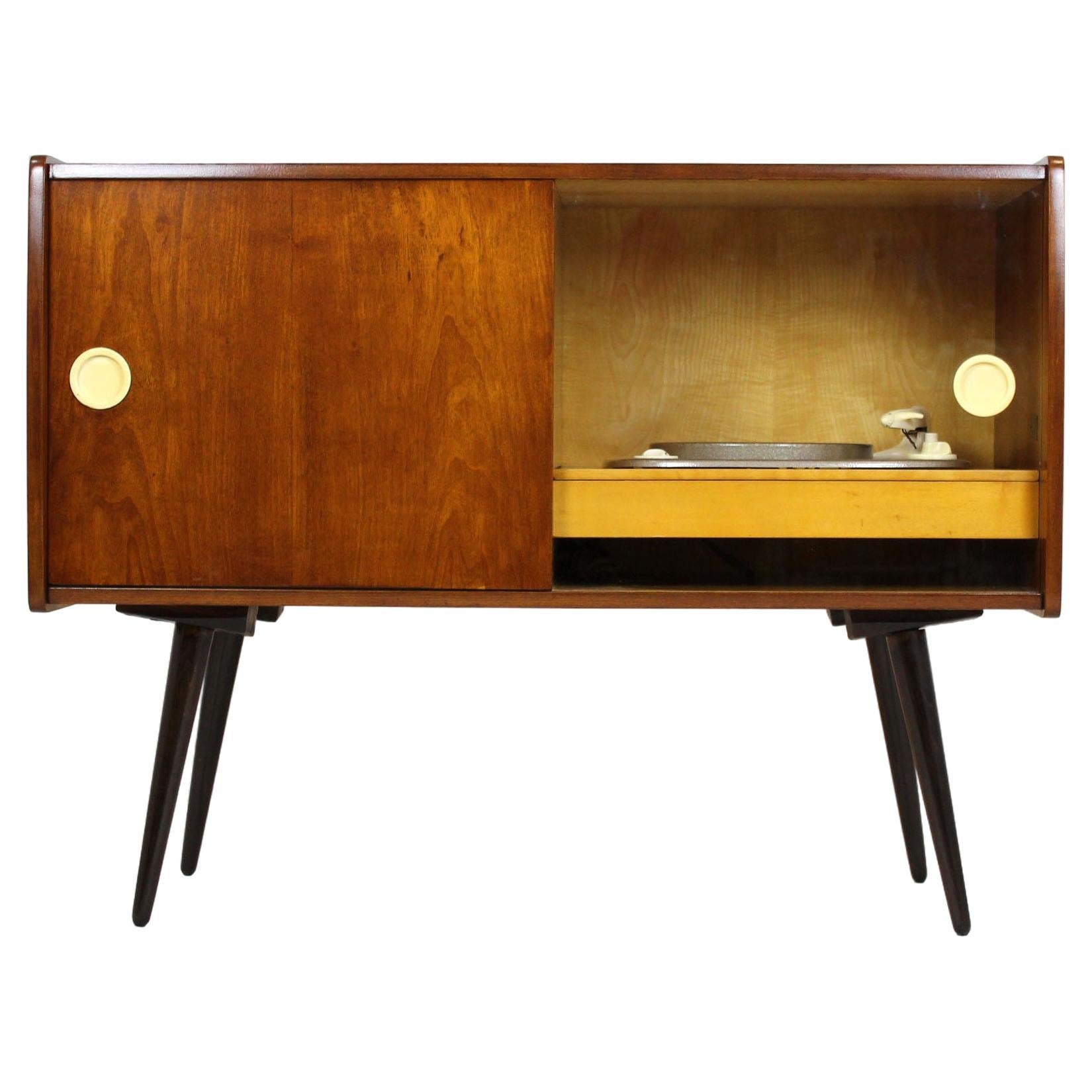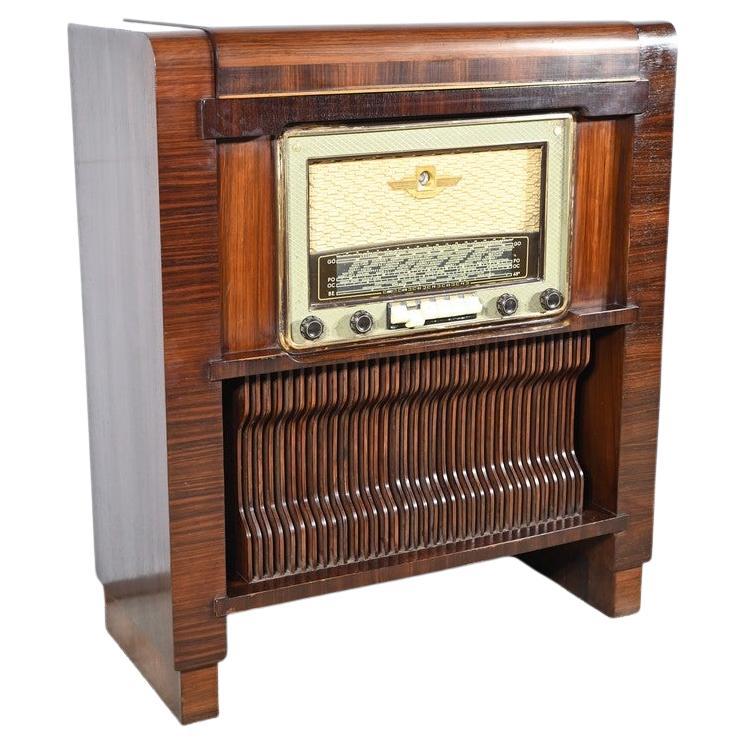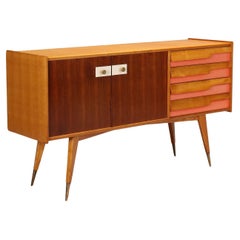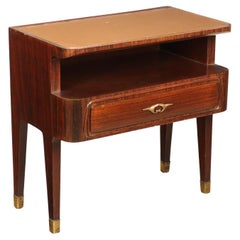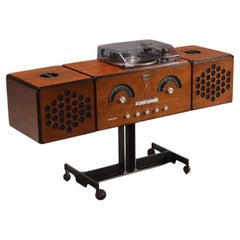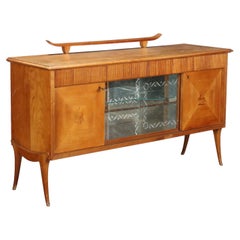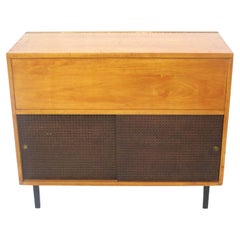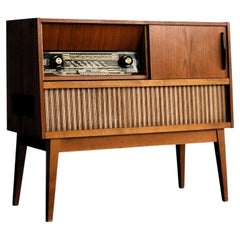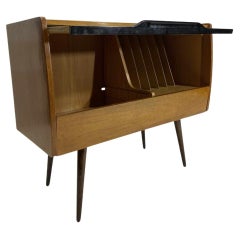Items Similar to Blaupunkt Colorado 60's Plant
Want more images or videos?
Request additional images or videos from the seller
1 of 17
Blaupunkt Colorado 60's Plant
$2,396.29
£1,783.55
€2,000
CA$3,282.31
A$3,650.65
CHF 1,906.26
MX$44,424.53
NOK 24,345.80
SEK 22,832.06
DKK 15,225.30
Shipping
Retrieving quote...The 1stDibs Promise:
Authenticity Guarantee,
Money-Back Guarantee,
24-Hour Cancellation
About the Item
System with power of 5 5 W. consisting of tube radio, and turntable in addition Bluetooth system (BT 5.3) that allows you to connect any kind of smartphones and tablets, all completely overhauled, arranged and working. Good condition (For Bluetooth BT 5.3 operation press on TA radio keypad LW, for TA turntable operation)
- Creator:Blaupunkt (Manufacturer)
- Dimensions:Height: 31.11 in (79 cm)Width: 37.8 in (96 cm)Depth: 14.38 in (36.5 cm)
- Style:Mid-Century Modern (Of the Period)
- Materials and Techniques:
- Place of Origin:
- Period:
- Date of Manufacture:1960s
- Condition:Wear consistent with age and use.
- Seller Location:Milano, IT
- Reference Number:1stDibs: LU1721243625742
About the Seller
4.9
Platinum Seller
Premium sellers with a 4.7+ rating and 24-hour response times
Established in 2015
1stDibs seller since 2015
426 sales on 1stDibs
Typical response time: 1 hour
- ShippingRetrieving quote...Shipping from: Milan, Italy
- Return Policy
Authenticity Guarantee
In the unlikely event there’s an issue with an item’s authenticity, contact us within 1 year for a full refund. DetailsMoney-Back Guarantee
If your item is not as described, is damaged in transit, or does not arrive, contact us within 7 days for a full refund. Details24-Hour Cancellation
You have a 24-hour grace period in which to reconsider your purchase, with no questions asked.Vetted Professional Sellers
Our world-class sellers must adhere to strict standards for service and quality, maintaining the integrity of our listings.Price-Match Guarantee
If you find that a seller listed the same item for a lower price elsewhere, we’ll match it.Trusted Global Delivery
Our best-in-class carrier network provides specialized shipping options worldwide, including custom delivery.More From This Seller
View All50s-60s Sideboard
By Non-Standard Furniture and Lighting
Located in Milano, IT
Vintage 20th-century Italian-made furniture restored in our workshops, made of ash wood with mahogany veneer and formica inserts. Features two hinged doors and four drawers; brass ha...
Category
Vintage 1950s Italian Mid-Century Modern Cabinets
Materials
Brass
$3,115
Bedside table 50s-60s
By Non-Standard Furniture and Lighting
Located in Milano, IT
Nightstand with drawer and open compartment, exotic wood veneer, back-treated glass, brass. Good conditions.
Category
Vintage 1950s Italian Mid-Century Modern Night Stands
Materials
Brass
Radiophonograph 'RR 126' by Achille and Pier Giacomo Castiglioni for Brionvega
By Achille & Pier Giacomo Castiglioni
Located in Milano, IT
Iconico radiofonografo modello 'RR 126' disegnato dai fratelli Achille e Pier Giacomo Castiglioni e prodotto a partire dal 1965 da Brionvega. Body and cases made of brown wood while ...
Category
Vintage 1960s Italian Mid-Century Modern Musical Instruments
Materials
Aluminum
50s Furniture Buffet
By Non-Standard Furniture and Lighting
Located in Milano, IT
Buffet with visible under-top drawers, with grissinated front, hinged doors, and bar compartment in the center, with transparent glass sliding doors with decorations and covered with...
Category
Vintage 1950s Italian Mid-Century Modern Buffets
Materials
Glass, Mirror, Cherry
$1,198
50's Nightstand
By Non-Standard Furniture and Lighting
Located in Milano, IT
Bedside table also usable as coffee table, drawer under top, ash wood, grissin, plexiglass (not original) on top, brass ferrules.
Category
Vintage 1950s Italian Mid-Century Modern Night Stands
Materials
Brass
$898
50s-60s Drawer Cabinet
By Non-Standard Furniture and Lighting
Located in Milano, IT
Cabinet with drawers and hinged doors, made of mahogany veneered wood, formica inserts and clear glass resting on the top.
Category
Vintage 1950s Italian Mid-Century Modern Commodes and Chests of Drawers
Materials
Glass, Formica, Mahogany
$2,336
You May Also Like
Mid Century Stereo / Record Cabinet in the Style of Paul McCobb
By Planner Group
Located in Cincinnati, OH
A honey toned solid maple stereo cabinet with pull up top revealing an area for your stereo and turntable having pre cut holes for wiring . The lower area has two perforated sliding ...
Category
Mid-20th Century American Mid-Century Modern Cabinets
Materials
Maple
vintage audio furniture radio cabinet 1960s Sweden
Located in Lemmer, NL
vintage audio furniture radio cabinet 1960s Sweden
period 1960s
design EIA Stockholm Regent Sweden
condition good minor signs of use radio ...
Category
Vintage 1960s Swedish Cabinets
Materials
Oak, Teak
Germany Grundig Table Radio, Hi Fi Sound.
Located in Lisboa, Lisboa
Grundig table radio, Hi Fi Sound. With a varnished wooden case, refined finish and elegant design. The top houses a golden grille that covers the speaker, while the bottom contains t...
Category
Mid-20th Century German Mid-Century Modern Musical Instruments
Materials
Metal
Vintage Music Box
Located in Banská Štiavnica, SK
Vintage music box in very good condition.
Category
Vintage 1970s Slovak Mid-Century Modern Music Stands
Materials
Wood
Vintage Record Cabinet from Supraphon, 1959
Located in Żory, PL
Record cabinet made by Supraphon in 1959.The cabinet has been restored and is in very good condition. The turntable has not been checked, it is not kno...
Category
Mid-20th Century Mid-Century Modern Sideboards
Materials
Glass, Wood
TSF & Record Player Cabinet, Amplix – 1950
Located in HÉRIC, FR
This rosewood veneer cabinet features an Amplix tube radio on the front.
Below, a record compartment can store no fewer than 34 vinyl records.
The top has a hinged, veneered flap, an...
Category
Mid-20th Century French Musical Instruments
Materials
Wood
More Ways To Browse
Colorado Used Furniture
Bluetooth Radio
Blaupunkt Vintage
Radio Giradischi Vintage
Blaupunkt Radio Vintage
Blaupunkt Radio
Italian Stereo
Music Box Cabinet
Vintage 1970 Record Player
Fm Radio
Vintage Phonograph Records
Gramophone Furniture
Gramophones
Piano Action
1950 Record Player
1970s Record Player
Bakelite Radios
Concert Grand Piano
